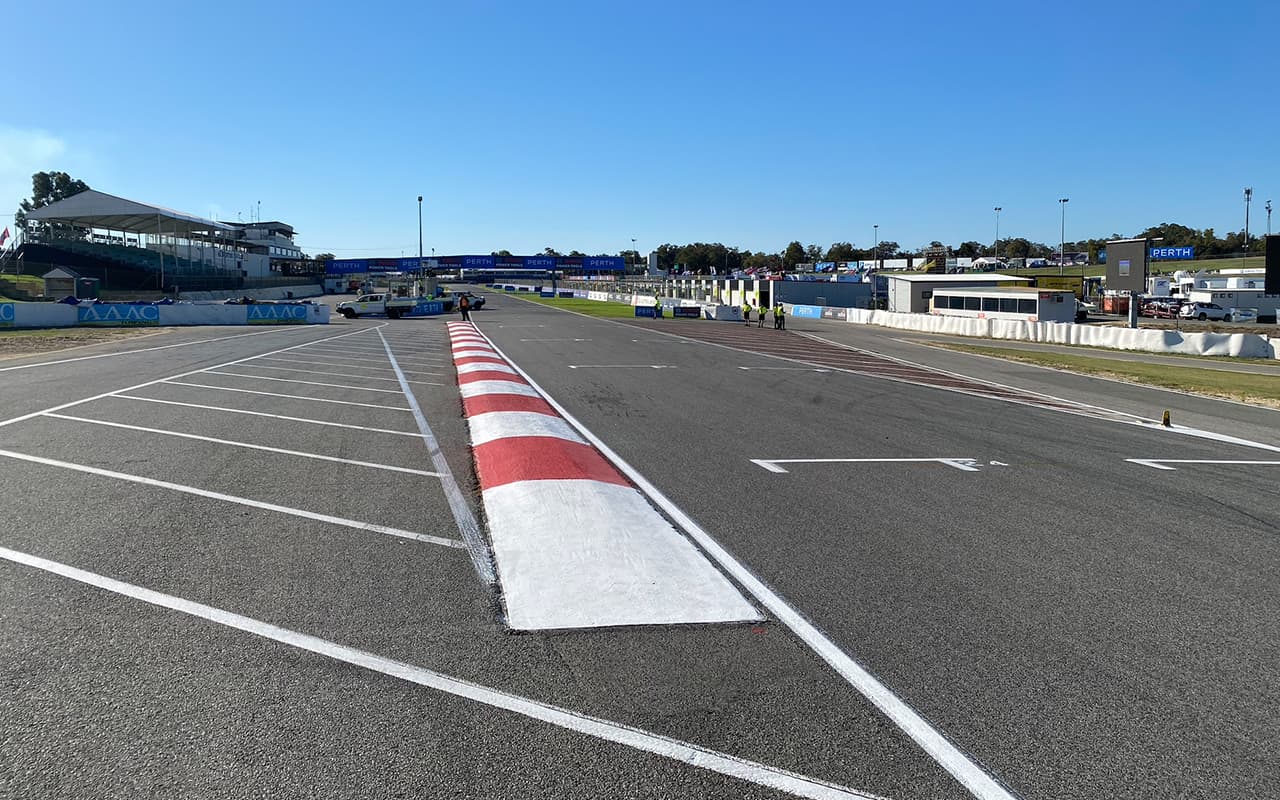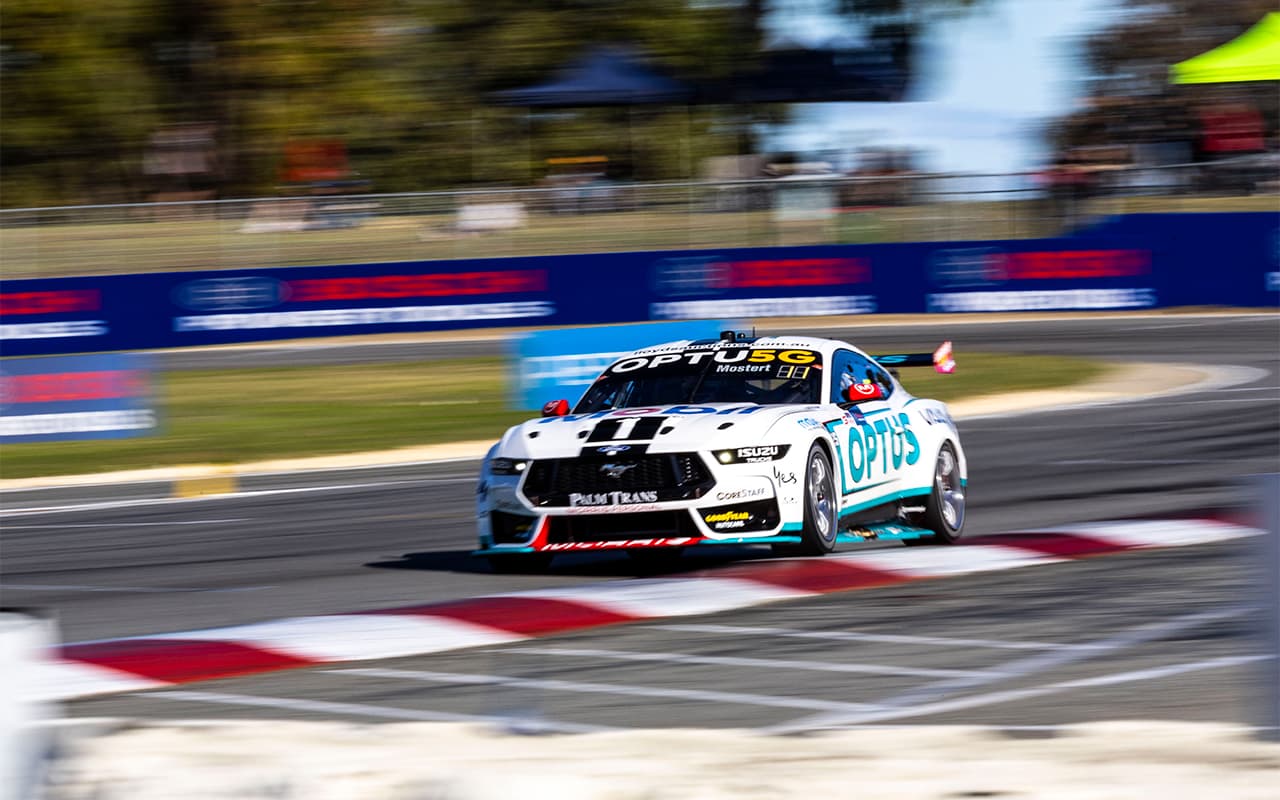The cutthroat quirk of Perth track limits breaches
Straying outside the track limits at Turn 7 in Perth could have big ramifications on this weekend’s Supercars action.
While not a new term in Supercars, track limits will be something to keep an eye on at the Bosch Power Tools Perth SuperSprint, particularly in all-important Boost Mobile Qualifying.
But what makes Perth’s Turn 7 different, and why does it matter? First, let’s explain the basics.
What are track limits in Supercars?

Track limits are the white lines that run around the edge of the circuit. The lines are the boundary that drivers are not allowed to cross. They are called limits for a reason — drivers are not allowed to exceed these limits and can face a penalty, should stewards believe they have gained an advantage.
Electronic timing loops are embedded in parts of the track where track limits will be breached, with a transponder recording accurate breaches. Why does Supercars have track limits?
Without track limits, drivers could use parts of a track to gain an advantage. For example, limits could be exploited to take a wider line through the corner.
Why does this matter? Well, a wider line increases a car’s minimum speed, allowing them to carry more speed through the corner, and go faster.
Why are penalties given, and what are the penalties?
Typically, track limit violations in practice simply result in lap times being deleted.
Lap times are also deleted in qualifying, but that could mean a driver could lose places on the starting grid, or miss the next part of qualifying.
Notably, Shane van Gisbergen triggered the timing loop in Sydney last year, ensuring he lost his fastest lap and started the race from 20th.
In the race, an initial breach will receive a warning, with the second a bad sportsmanship flag and a third ultimately met with a penalty to be determined by the stewards.
Why it matters in Perth

Timing loops are installed at Turn 3 and Turn 7 to monitor track limits. However, Turn 3 triggers a standard breach of losing a lap. The final corner, being Turn 7, has an extra consequence.
Perth’s Turn 7 looks like a simple 90-degree right-hander on paper, but drivers have been known to test the limits by straddling the kerb and even going over it, gaining an advantage on the short run to the finish line, or down pit straight to start a new lap.
Ahead of the 2018 event, drivers were initially instructed that the track limits would not be enforced at Turn 7, provided the timing loop at the end of the kerbing was not triggered. However, drivers exploited a loophole and began driving around the outside of the kerb before cutting back on track just before the timing loop.
Midway through the weekend, officials cracked down on Turn 7, informing drivers that "the track edge line at the exit of T7 will determine the track limit and penalties will be applied.”
A solution was that any driver deemed in breach of the track limit during practice and qualifying will lose that lap and their following lap — a rule that remains today, and is only applied in Perth.
In the race, an initial breach will receive a warning, with the second a bad sportsmanship flag and a third ultimately met with a penalty to be determined by the stewards. In 2022, in a battle for the win, Cam Waters rounded up Will Davison around the kerb after the latter launched down the inside. Waters was given a time penalty, and Davison inherited the win.
Losing a timed lap and the subsequent lap could put drivers under massive pressure this weekend, given the three parts of qualifying are just 10 minutes each, down from 15 last year.
And then, there are the advantages found in races too — last year, James Golding was demoted a position for a breach of track limits during a last-lap battle with Bryce Fullwood. Golding drove around the Turn 7 exit kerb, and managed to stay ahead of Fullwood on the short run to the chequered flag.
The man behind the decisions, Supercars Driving Standards Advisor Craig Baird, is adamant the system is necessary, so drivers don’t gain an advantage.
“It’s a great system with the transponders, and I’m 100 percent confident in this system,” Baird told Supercars.com.
“Why do drivers lose their lap and the following lap? They would gain a big advantage by going mega fast and running wide at Turn 7, allowing them to pluck another gear down the pit straight.
“They would get an advantage for their next lap, and will have done so by going outside the track limits. Obviously, no one wants to lose their lap or get a penalty, but that's not right.
“In the race, drivers have an allocation, and they will get a warning. They then get a bad sportsmanship flag, and if they keep going, they get a penalty.
“Like I said, we don’t want drivers to get penalties. But we can’t have them looking to gain an advantage or getting moves done off the track.”






